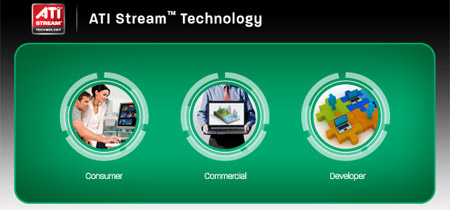Introduction
GPGPU is something of a buzz term in the graphics market today. The acronym, which stands for general-purpose computing on graphics processing units, is used to indicate that a traditional GPU can do a whole lot more than its traditional task; pushing out playable frame rates in all the latest games.
The green team (NVIDIA, that is), has been bellowing the importance of GPGPU throughout the year, and we recently concluded that its CUDA and PhsyX technologies could finally be coming to fruition. Despite the underlying promise of its GPGPU ambitions, however, NVIDIA has somewhat struggled to get large quantities of programmers to adopt its CUDA development tools.
In response, it announced yesterday that support for OpenCL - a recently-finalised open programming language geared toward parallel computing - is to be added alongside CUDA in an effort to attain widespread support from developers.

But what about the red team? AMD has been sitting it out for the best part of the year, but it's arriving on the GPGPU scene today with v8.12 of its Catalyst software suite. Inside, users will find ATI Stream, a technology that'll add GPGPU functionality to all Radeon HD 4000-series graphics cards. Let's see what it has to offer.









